Last Updated on October 28, 2024 by Ellen
Labuan Bajo, Indonesia, has a certain charm tourists might miss if they simply fly into the small but modern airport to visit Komodo National Park.
It’s a fishing town with a port that is straining to accommodate a massive rise in visitors over the last decade. Tourists use Labuan Bajo (also spelled Labuanbajo) as the starting point for tours to see the wild Komodo dragons.
The town itself is a couple of one-way streets with a few restaurants and shops, a fish market, hotels, and storefront tour operators. It’s the kind of place that’s small enough to walk the main street from one end to the other in a few minutes.
My Teva sandals broke and we asked locals about shoe repair. They directed us to a guy on a street corner in the town. His shop was a stool. His thread better than glue. His price better than a new pair of Tevas.
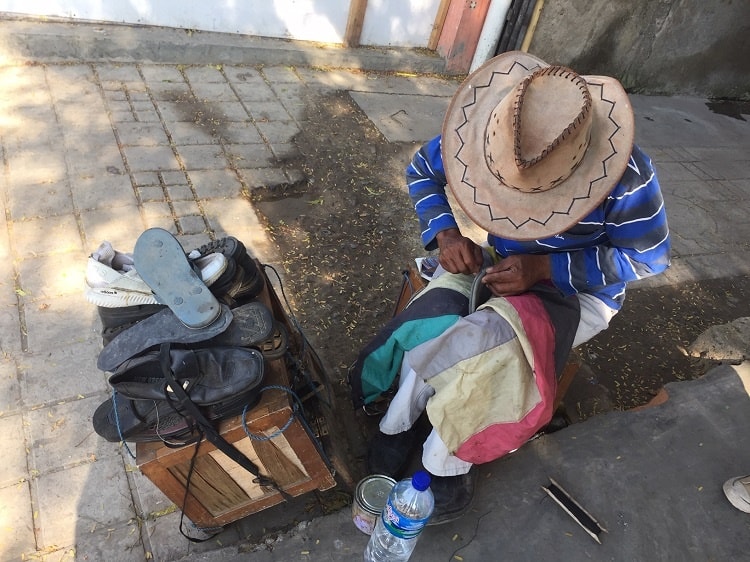
He wanted 20,000 rupiah ($1.43). We were so pleased we gave him 30,000 ($2.14).
Unfortunately, there already is a Starbucks in Labuan Bajo. But leave the town and you can experience its counterpart — the village. This likely is missed by most tourists.
My husband booked an Airbnb in the village, and it was perfect – away from the mass of hotels that cater to tourists around the port. In fact, it was in the opposite direction of the water, up the hill.
Our rental was not walking distance to the town center, so our host offered private drivers to shuttle us into town as needed. The local men working as private car drivers spoke basic to decent English. From them we learned a bit about Labuan Bajo during our 15-20 rides to and from town.
Labuan Bajo town is the bustling part. Labuan Bajo village is where we stayed. Both are considered Labuan Bajo. Main streets in both have open sewers that assault your senses even if there is no wind.
Both have locals working to make a living, and working to live. In town people sell tours, car rides, travel arrangements, hotel stays.
The village is where locals mourn at funerals, sell goods at the main authentic market, run used clothing stores, pray to God in church.
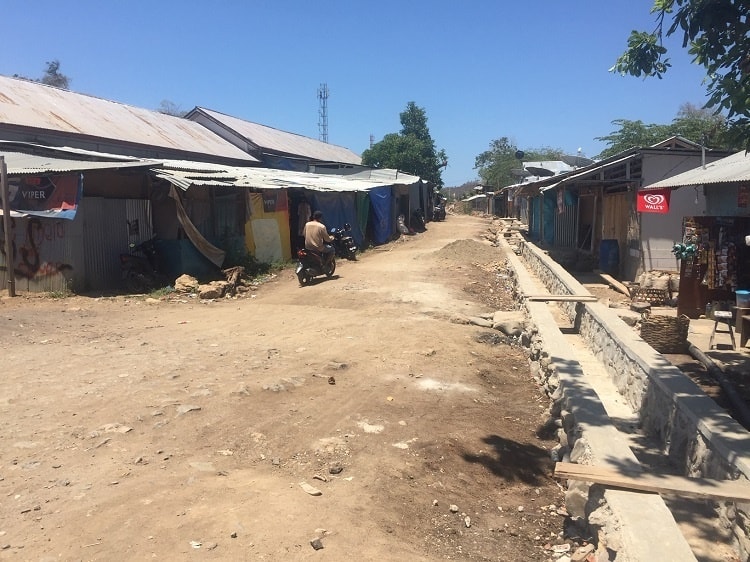
Labuan Bajo is predominantly Catholic. The Portuguese reached this part of the world and influenced its culture (hence “Flores” Island, and “Flores Sea).
In the village with only one paved road, tin shack homes with tarps as doors, there is a newer Catholic church large enough to fit 1,000 people in its pews. Mass is only held at 5:00 a.m. each day “because we work early,” a member told us.

We took refuge from the mid-afternoon heat on its upper-balcony. As we enjoyed the breezes on the upper level, a 13-year-old girl approached us with her aunt hanging back. She wanted to practice her English and we happily helped her out, as we so often do with young people who eagerly want to learn English.
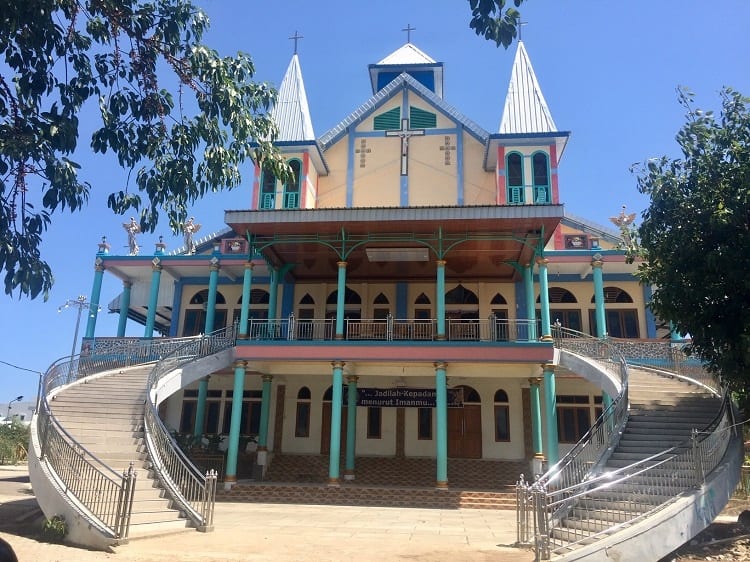
We walked through the town and watched a man put fresh coconut in a grinder powered by a lawn mower engine. One coconut shredded on the spot was the equivalent of 30 cents. It was tasty.
We wandered the market and bought peanuts from a woman who smiled when I tried to perfect my pronunciation of “terima kasih,” a simple “thank you,” as we exchanged rupiah for nuts.
We saw a funeral gathering. We peaked into thrift stores filled with clothes no one would want in the USA – not even the poorest of the poor. We sat in front of a store and had cold drinks, and watched the village rhythm, until the sewage smell got to me.
We saw a goat on a scooter. No — really — look!
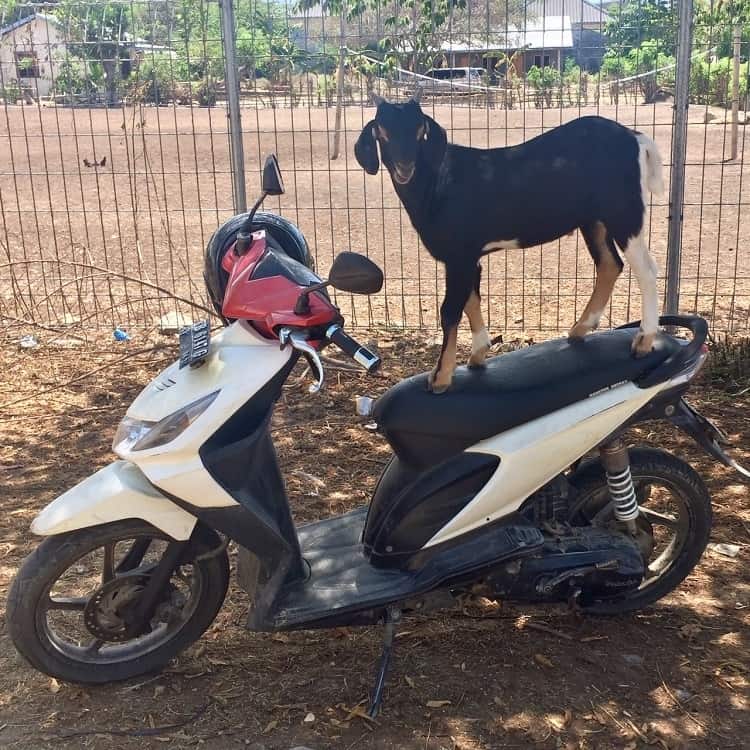
Batu Cermin in Labuan Bajo
We saw an occasional tourist drive through the village on a scooter. There isn’t too much to “do” in Labuan Bajo village. The Batu Cermin, Mirror Stone Cave, is the village’s only official tourist draw that brings people up from the port area.
A Dutch explorer found Batu Cermin. Here again we found people who spoke decent English. We were able to have more conversations to learn a bit more about the area from the friendly people at the cave’s admission desk.
The cave was small, but fun, and there are plenty of spots on the path to evade noise from other visitors. But since it’s the only thing to “do” in the village, expect to see some tourists.
Cave admission was 50,000 rupiah, or $3.50. For an area with a lot of poverty, this park was extremely well kept with three areas of clean public bathrooms.
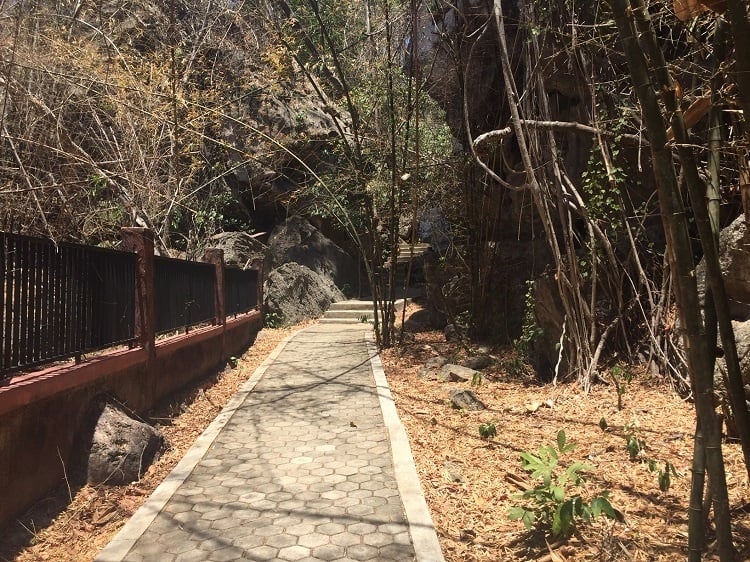
The region around Labuan Bajo also boats hiking trails, beaches, and waterfalls, but we didn’t stay long enough for any of that. And that’s actually a shame. We both liked it there and said we would have stayed longer, if we had known. But we didn’t know, and that’s why I’m telling you this, so that you know.
Labuan Bajo is a place with extreme poverty, yet people are kind to us strangers. If you’re open-minded, you might enjoy staying more than a night in this village around your Komodo park trip. Especially if you are charmed by authenticity rather than window-dressings for tourists.
Reminder: This is an independent blog. We get nothing in return for any positive reviews or recommendations. Always check current reviews on Airbnb links we list.
